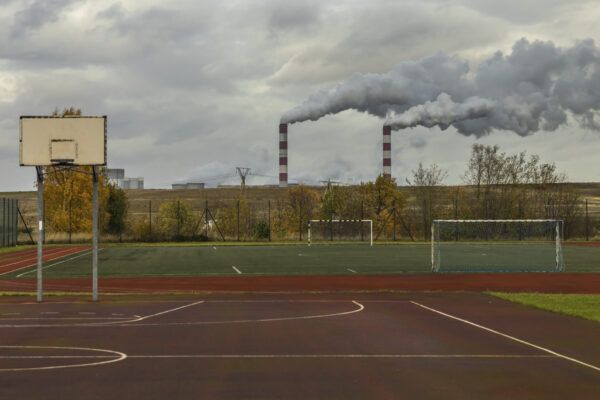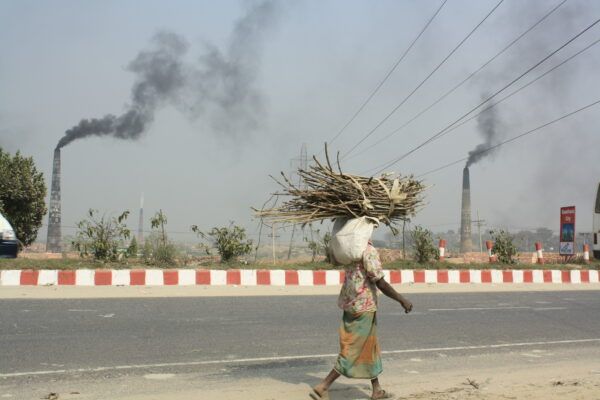Our new report launched today on the first ever World Day for Glaciers makes a compelling case for fast action on black carbon, otherwise known as soot. The report outlines the health and climate impacts of this short-lived climate pollutant and calls for urgent action to cut emissions and achieve near-immediate climate gains while improving air quality, public health, and the economy.
The devastating impacts of climate change are being felt worldwide. Reducing black carbon, alongside other super pollutants, is the fastest, most effective way to slow climate change, while also mitigating the enormous health impacts of air pollution. Yet to date not enough has been done.
Jane Burston, CEO of Clean Air Fund
Black carbon comprises the visible, dark fumes emitted from vehicles, wildfires, household activities such as cooking with traditional fuels, and industrial activity. While black carbon only remains in the atmosphere for up to a few weeks, it has an immediate warming effect. Alongside other so-called super pollutants such as methane, black carbon is responsible for half of the global warming witnessed to date. Targeted action to cut it would deliver immediate benefits, supercharging climate mitigation.
Black carbon is responsible for 39% of glacier melt in the Tibetan Plateau and similarly affects the Himalayas, Alps, Andes and Rockies. It is a major reason why the Arctic is warming four times faster than other parts of the world, which is increasing the chances of dangerous climate tipping points being breached. For this reason, the impact of black carbon on the cryosphere deserves particular attention.
On this first World Day for Glaciers, the urgency to cut black carbon has never been clearer. Now we must quickly move to scale up solutions. We are working with governments and partners to overcome the barriers identified in this report, integrate black carbon reductions into climate strategies, and turn commitments into action.
Martina Otto, Head of the UNEP-Convened Climate and Clean Air Coalition (CCAC)
As a component of fine particulate matter, black carbon contributes to ill health and the more than 8 million premature deaths caused by air pollution annually. It is also a driver of economic costs of air pollution, equivalent to over 6% of global GDP each year, with its impacts particularly felt among the poorest and most marginalised households and workers.
In spite of this, not enough is being done to address black carbon. Our report identifies six types of obstacles to action – political, scientific, financial, regulatory, industrial and communication. It argues that solutions that already exist could deliver an 80% reduction in black carbon by 2030, from 2010 levels, compared to a 3% reduction on a ‘business as usual’ trajectory.
The fastest way to achieve progress on clean air is to target the abatement of black carbon and other super-pollutant sources coming from sectors like residential biomass combustion, transportation and industry, amongst others. ICIMOD’s experience in the Hindu Kush Himalaya region shows that investing in cleaner technologies, along with continued advanced monitoring, and a strong policy support mechanism can lead to long-term environmental, economic and health benefits—an approach that is critical for one of the world’s most polluted regions.
Izabella Koziell, Deputy Director General at the International Centre for Integrated Mountain Development (ICIMOD)
Among the recommendations in the report are:
- Focus on action in the cryosphere, including via the International Maritime Organisation (IMO) requiring ships operating in or near the Arctic to use cleaner fuels, and the Arctic Council setting a new post-2025 black carbon emissions target
- Prioritise black carbon in clean air and energy policies and integrate black carbon targets into national action plans and the current revisions of Nationally Determined Contributions (NDCs)
- Take coordinated action on super pollutants (such as holistic waste management solutions that cut both black carbon and methane)
- Fund research to deepen the evidence base for the impact of black carbon on both climate and health, with a focus on the vulnerable groups across global north and global south countries.
Acting in line with the report’s recommendations would have immediate and wide-reaching benefits for health and climate as well as the wider environment, economy and society.


